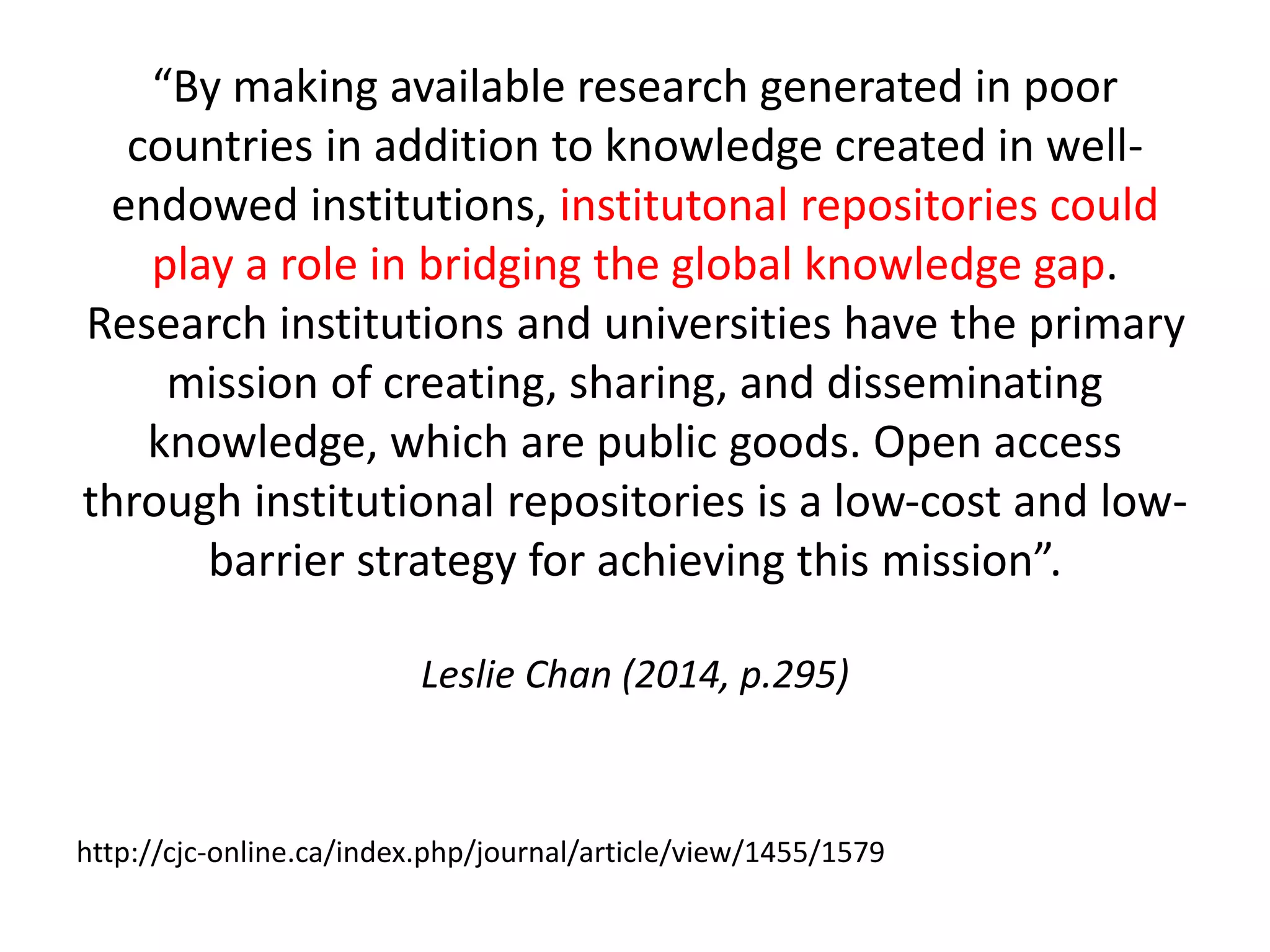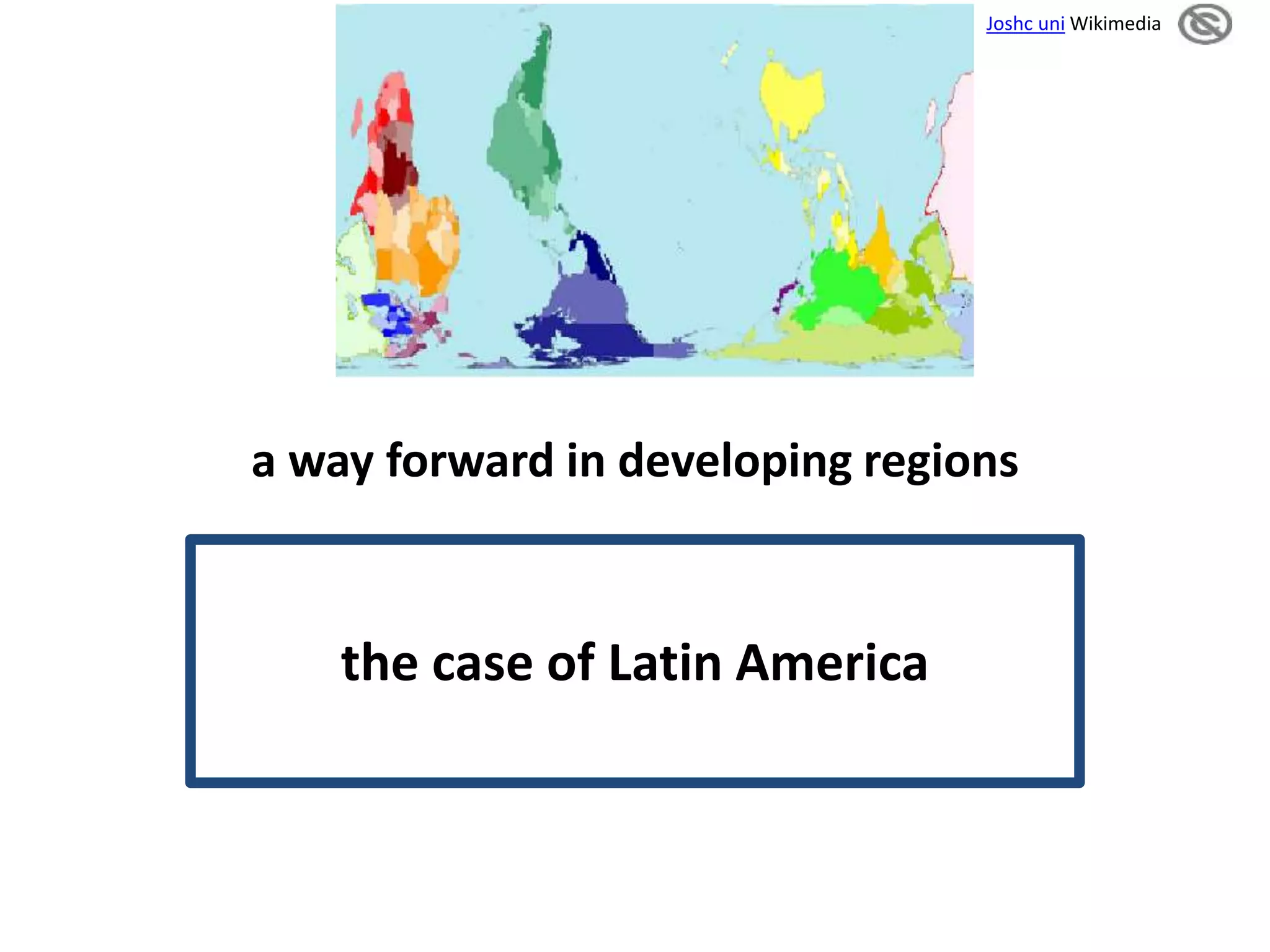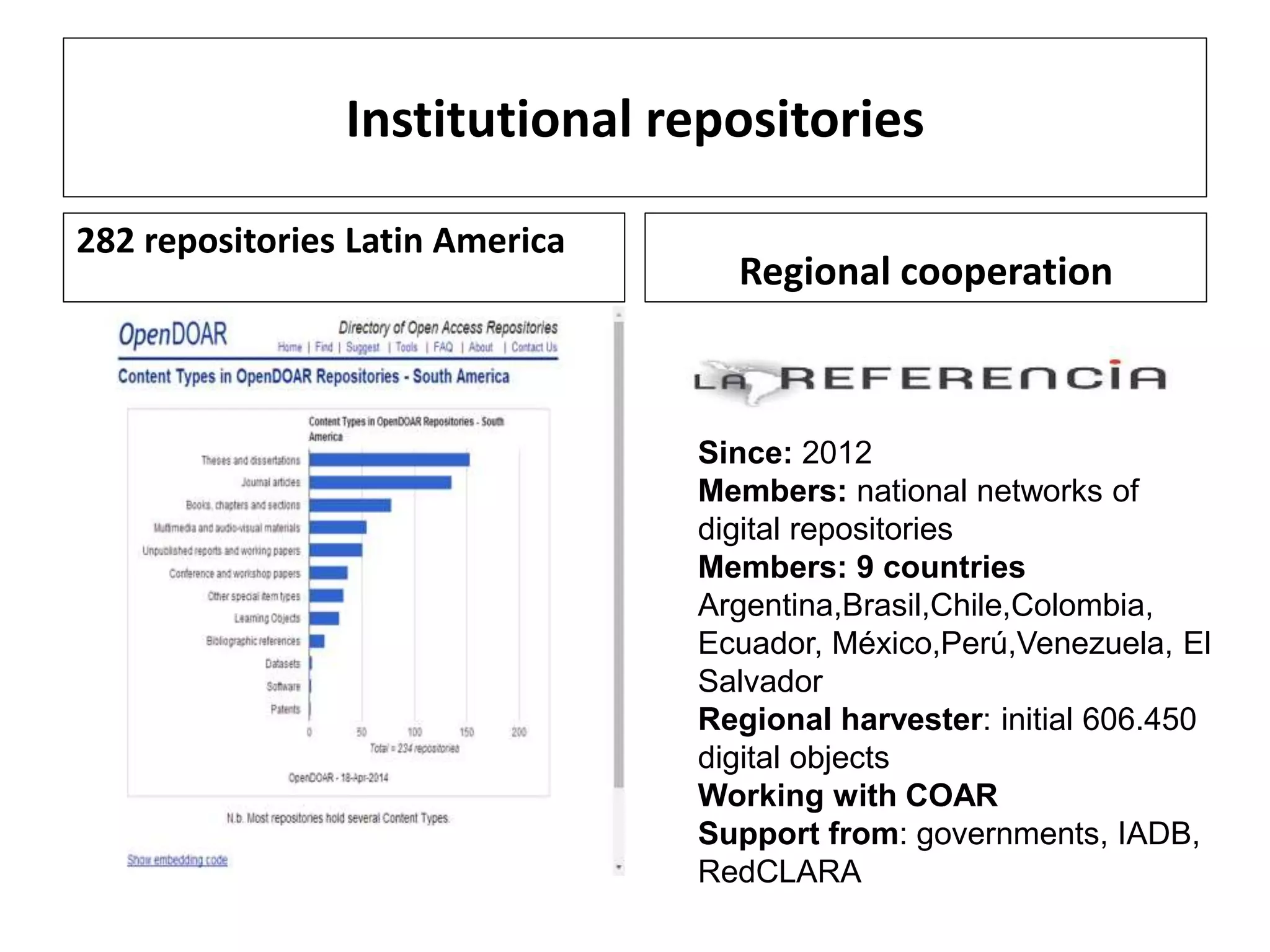The document discusses the importance of inclusive and accessible open access (OA) for scientific research, particularly from the global south. It highlights the challenges faced by researchers in Latin America, such as the financial burden of article processing charges (APCs) and the need for stronger support for local journals and repositories. The document calls for collaborative efforts to ensure research generated in developing regions is included in the global knowledge base.

























